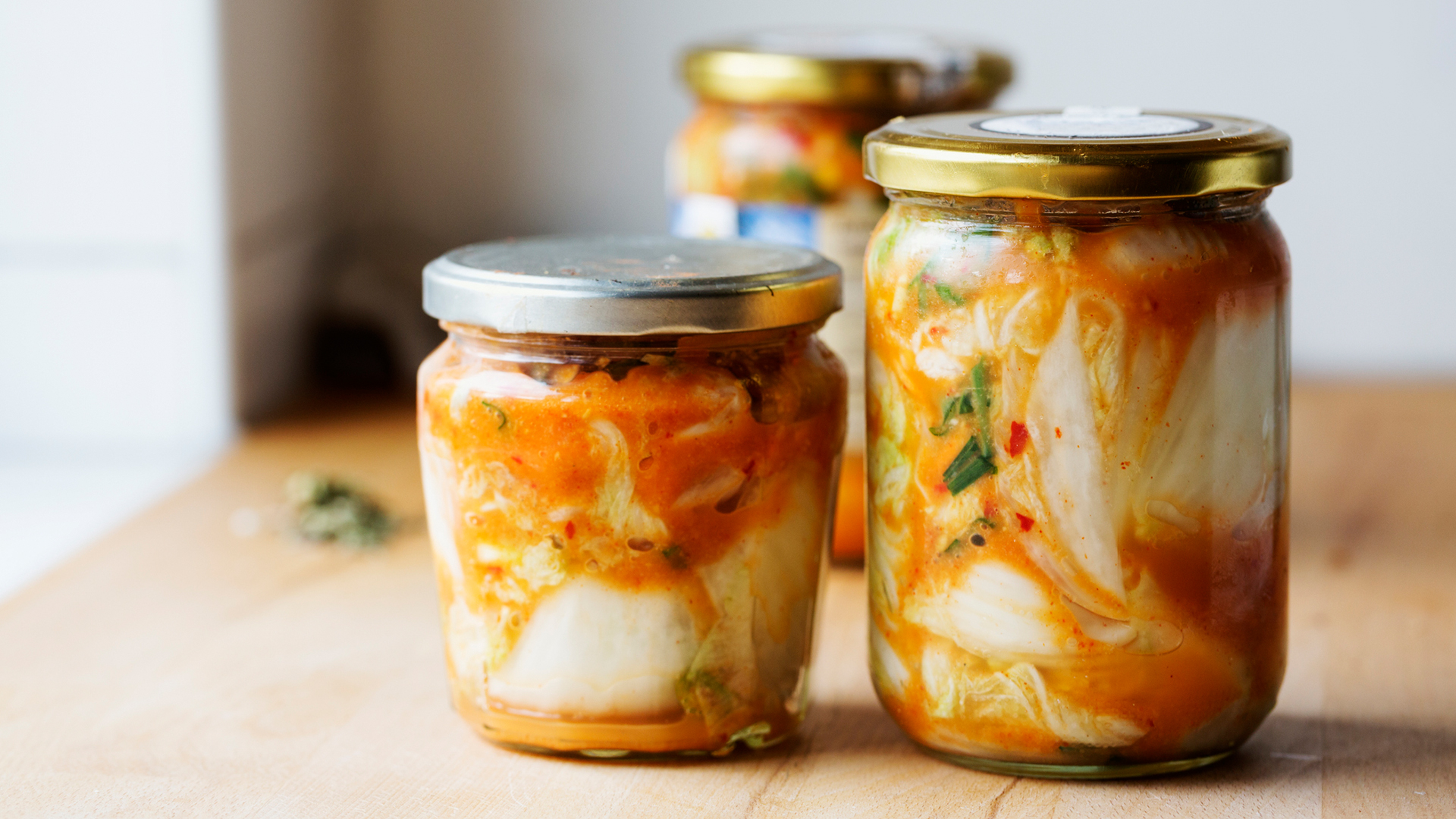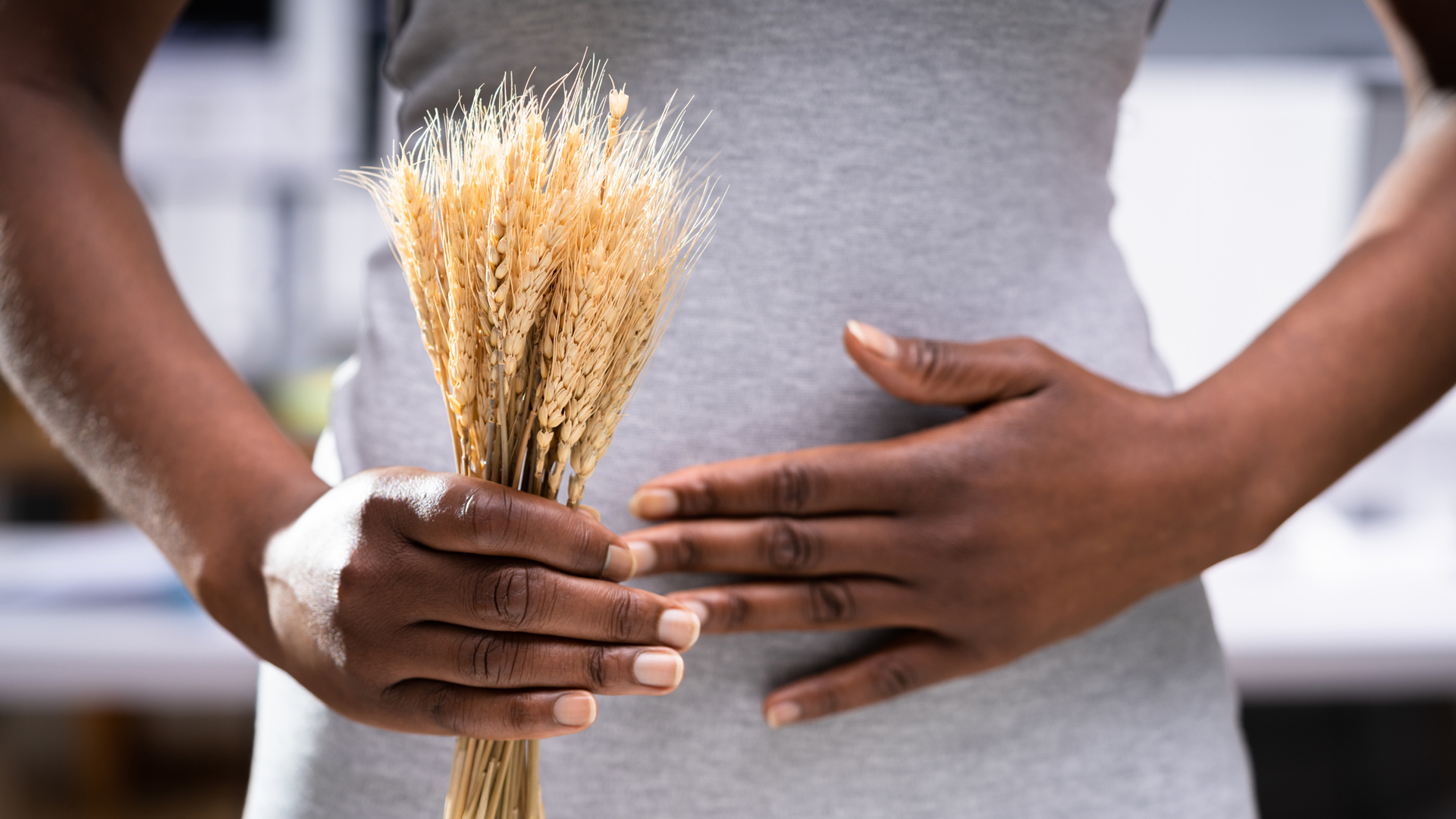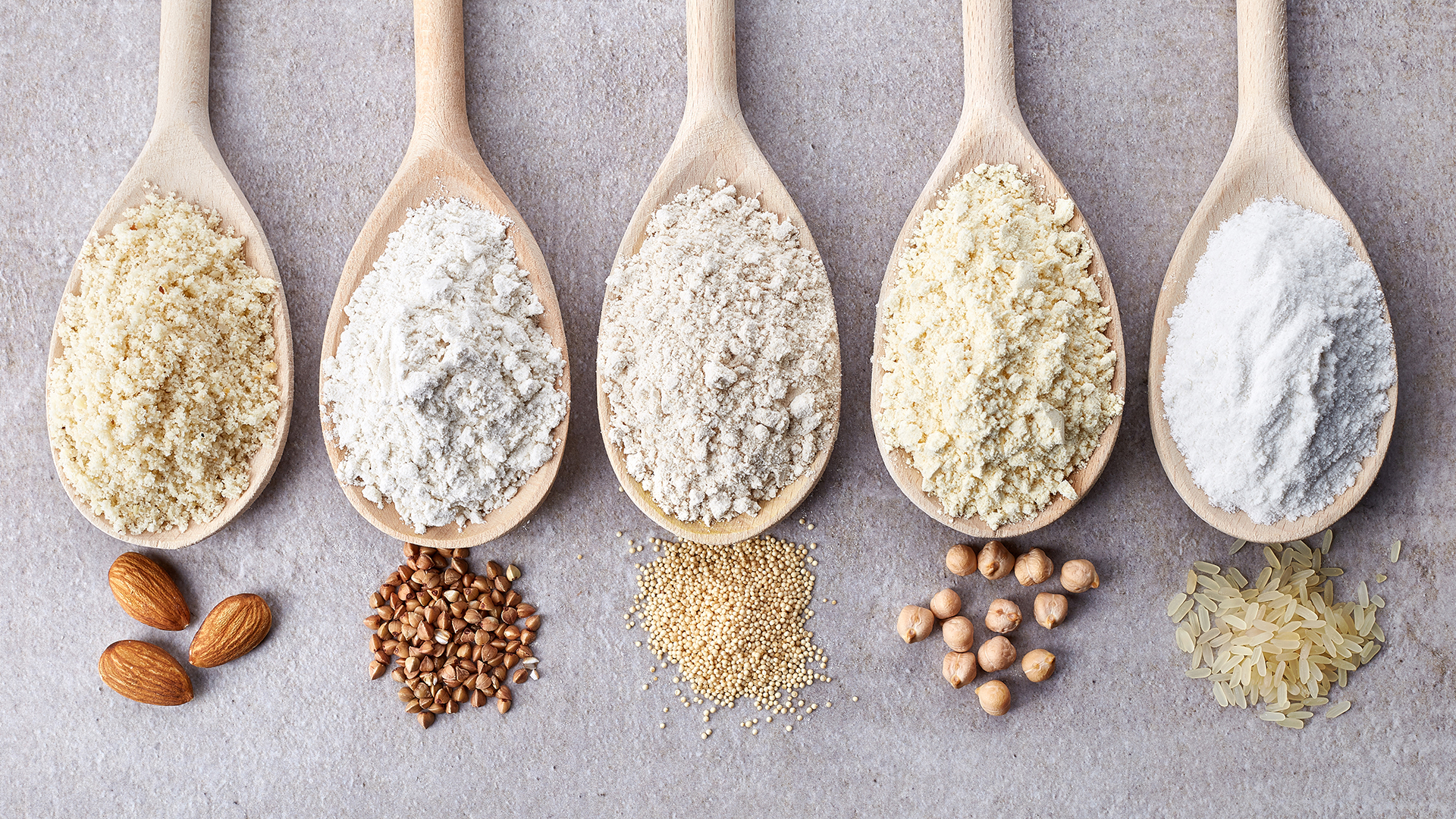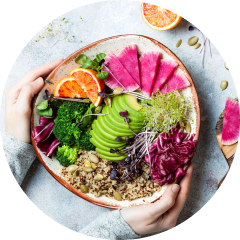ARTICLES > NOURISH
FLOUR POWER: THE GLUTEN-FREE FLOUR GUIDE
Is rice flour gluten free? Do you know your chickpea flour from your tapioca, and is a blend better? Get the answers in our guide to gluten-free flour.
By Loni Wilson
Understanding gluten-free flours and using them successfully can feel daunting at first, but once you understand the basics, you’ll be cooking with confidence in no time and ready to take on the great baking recipes here at Gluten-Free Living.
Trust me, there have been many failures in my flour learning journey, from crumbly, dry messes to bakes so rubbery I think they could bounce. But there have been plenty of successes too, after years of practice and understanding how different products function.
It’s safe to say you never stop learning, modifying, and improving – especially as product availability has expanded so much in recent years. As a passionate cook with food intolerances including gluten, wheat and corn (as well as yeast, dairy and tomato), I keep in my pantry a wealth of options, from pre-blended gluten-free flour mixes to individual flours such as potato, tapioca, rice, chickpea (also known as besan), coconut and more.
PRE-BLENDED FLOURS
Pre-blended gluten-free flour blends are excellent and widely available in supermarkets. Typically, they’re a combination of rice flour, corn flour, tapioca starch, potato starch and thickeners such as xanthan gum or guar gum.
Rice flour gives bulk, while tapioca and potato give stretch and texture, and the thickeners help retain moisture in the final product. Self-raising flour blends have baking powder added, which gives lift in bakes. Generally, they replace gluten-containing flour at a 1:1 ratio, but I find they can result in a slightly thicker product and a little more liquid can be required.
In my experience, different brands give different results, so try them out and see which you prefer. In my house, the pre-mixes are handy for my gluten and lactose-free daughter so we can quickly whip up pancakes using the easy-to-remember “1 recipe” – 1 cup gluten-free self-raising flour, 1 egg, 1 tablespoon of caster sugar and 1 cup of lactose-free milk or milk alternative. Sometimes a little extra milk is required, depending on the flour blend used and thickness of the batter.
INDIVIDUAL FLOURS
The array of individual flours in my pantry are used in everyday cooking, from sauces to baked goods to pastry. I am not only intolerant to gluten, but also corn – which rules out most pre-blended gluten-free flour mixes. While no single flour does the job of wheat flour, there are plenty of gluten-free flour alternatives and some great results can be achieved.
Some flours are great bulking agents, others provide a similar rubbery stretchiness to what gluten provides, and others have strong flavours so are more suited to specific dishes.
BLEND YOUR OWN GLUTEN-FREE FLOUR
In my experience, replacing wheat flour with 50 percent bulk flour (such as rice flour) and a 50 percent mix of gelling flours (potato, corn, tapioca, glutinous rice flour) is a good starting point.
To replace 1 cup of wheat flour, my go to blend is:
- ½ cup rice flour
- ¼ cup potato flour
- ¼ cup tapioca starch or glutinous rice flour
Xanthan gum can also be added to improve the keeping quality and moisture of the cake/slice/bread. You only need very small amounts of xanthan gum; ½ – 1 teaspoon dispersed through the flour blend is plenty. To make a self-raising blend, simply add 2 teaspoons of gluten-free baking powder to 1 cup of plain gluten-free flour blend.
KNOW YOUR FLOURS
-

CHICKPEA/ BESAN/GRAM FLOUR
This is used widely in Indian cooking: it has a strong flavour, so is best suited to vegetable fritters and pakoras, vegetable burgers, savoury pancakes and flatbreads, batters and thickening sauces and stews. Did you know pappadams are traditionally made with this flour?
-

QUINOA FLOUR
Made from the finely made seeds of the ancient crop, quinoa, this flour has a distinctly nutty flavour. This can overpower the finished product and gives a dense, gluey texture when used on its own, so is best used in conjunction with rice flour and in dishes with a strong flavour profile.
-

RICE FLOUR
Made from finely milled rice, rice flour is a staple in Asian cooking. It comes in both white and brown varieties, with brown rice adding a little more colour to the finished product. Rice flour is a great bulk flour to use in a blend, but gives a crumbly, dry texture used on its own. There are different brands available, some of which are a much finer powder than others. The coarser products give an obvious gritty mouthfeel to the finished product. I prefer the Asian brands of rice flour as they are a finer grind.
-

GLUTINOUS RICE FLOUR
Don’t let the name fool you, this flour does not contain gluten. Its name is derived from the sticky rice variety it’s made from, and its gelatinous attributes. This flour is great used in conjunction with rice flour to impart some stickiness, binding and texture. It is also an excellent thickener for sauces and gravies; simply stir one tablespoon in three tablespoons of water, mix to a smooth paste and stir through hot sauce until desired thickness is achieved.
-

TAPIOCA STARCH OR ARROWROOT
This is a starch extracted from cassava, which delivers a gelatinous texture and is used widely in gluten-free cooking, Asian cooking and as a thickening agent in sauces and gravies.
-

POTATO FLOUR
This flour is a very fine white powder, made from the starch extracted from potatoes. It provides a jelly-like structure, working well in conjunction with rice flour and to thicken sauces and gravies. When using potato flour to thicken, the sauce or gravy should be removed from the heat as soon as the gluten-free thickener has been added, to prevent thickener breakdown and the sauce going thin again.
-

COCONUT FLOUR
This is a tricky flour to use as a substitute, as it binds a large amount of liquid compared with other flours. I find the best way to use this is by starting with a recipe already designed for coconut flour so that you become more familiar with how it works, and then look to substitute it in other recipes. A rough rule of thumb is that ¼ cup of coconut flour replaces 1 cup of flour, and 1 egg should be added for moisture and structure.
-

CORN FLOUR
Corn flour is widely used in gluten-free blends, but it’s good to know that there are corn flours on the market made from wheat, and of course these need to be avoided if you’re on a gluten-free diet. Corn flour can be used to make light sponge cakes and to thicken sauces, gravies and curds.
-

SOY FLOUR
Soy flour is another gluten-free alternative, but converting recipes can take a few attempts, so stick with it. I recommend trying some recipes, learn how different elements function and looking at different cuisines, such as Asian and Indian recipes, as they don’t tend to rely on or use wheat/gluten flours and products as readily as Western cuisines do.
READ THIS NEXT

GLUTEN-FREE FOODS FOR GUT HEALTH
Can certain foods improve your gut health when you have coeliac disease? Get into the fascinating world of the human gut and the power of fermented foods.

WHY EXERCISE AND BONE HEALTH MATTERS MORE
Exercise for bone health is important for all of us, but if you have coeliac disease, the risk of osteoporosis is greater. Here's what you can do.

WHAT TO DO IF YOU ACCIDENTALLY EAT GLUTEN
If you have a gluten sensitivity or coeliac disease, you might know straight away after an accidental gluten intake. Here’s how to ease your symptoms.
See more















Thanks for the info on flour always good to get useful information to help with the coeliac journey